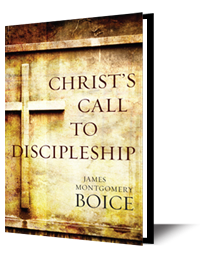
These cities of refuge are an illustration of how we find salvation in Jesus Christ. Now it is not a perfect illustration. This appointment of the cities of refuge was for people who were innocent of any real crime. We’re not innocent, we’re guilty of sin. Furthermore, although these cities were spaced throughout the land at convenient intervals, a person who had accidentally killed somebody else nevertheless had to scramble to get to one of them. They might be overtaken on the way. But salvation is never like that. We don’t have to scramble to find Jesus Christ. He is there with open arms, inviting us to come to Him. Not only that, but He actually pursues us. It’s not we who pursue Him. But even with these important differences, this illustration still makes some good points for us.

In Numbers 32 we have the request of the tribes of Reuben and Gad to settle down on the eastern side of the Jordan River. This came as a shock to Moses, and it explains some of his harsh language. It sounded like they were opting out, that they weren’t going to go with their brothers and help with the conquest. It was like Numbers 13-14 all over again! Moses doesn’t like that. However, the people assure him that’s not what they had in mind. They are going to go with their brothers to fight with them until the end of the war, but they wanted permission to come back and settle Transjordan. When that was explained, Moses agreed to it.

Chapter 31 is the last actual narrative section in Numbers, and it tells about this war against the Midianites, a very fierce war in which all the Midianites were killed. Since the Midianites were not in Canaan, we might wonder why this particular story is included. It seems like a digression from the task of preparing to cross the Jordan River and into the promised land. Why is this story here? There are a few reasons. First, it’s part of this ongoing story of the advance of the people toward Canaan. Second, it’s a foretaste of the conquest itself. The conquest involved the extermination of the Canaanite people, and that’s the emphasis in this war against the Midianites. They were all to be exterminated. Third, the account concludes the story of Balaam. When we left him back in Numbers 24 he was alive and well. Now we find out that he is executed in connection with the Midianite war, because he caused the people of Israel to sin in the matter of the pagan women.

Here in Numbers 27, Moses was disappointed that he wasn’t going to get to go into the land, but he did not seem shocked, rebellious, or unhappy at the fact that he would soon die. His concern in this passage is not with himself, but that the people might have a leader to direct their going out and their coming in after he was gone. He described the people as “like sheep without a shepherd” (v. 17), which is a phrase used by the Lord Jesus Christ as He looked out on the masses and had compassion on them.

The story of Balaam is the last significant narrative in the book of Numbers. What we have from this point on is the preparation of the people for their eventual entrance into Canaan and the conquering of the land. The geography is important, which we see from Numbers 26:3. All of this happened on the plains of Moab, by the Jordan River, across from Jericho. But before they crossed the Jordan and attacked Jericho, the Israelites needed to take care of some smaller matters.


















